When should you not keep a salmon in rivers?
By Rodney Hsu, Fishing with Rod | Published in November 2010
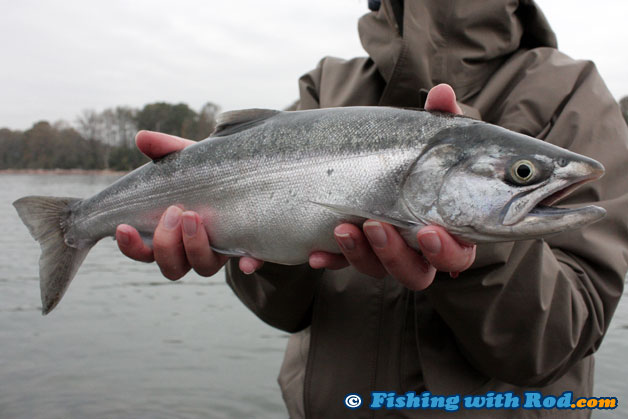
As fall salmon season winds down in November and December, chances are that you will come across this question - When should you not keep a salmon while fishing in rivers for them?
Pacific salmon return to their natal streams and carry out spawning. Depending on which species, they typically arrive in streams between August and November. This is every freshwater angler's best chance to catch them due to the high amount of fish in a confined system. As salmon travel upstream and stage for a period of time, they start entering the spawning phase.
Several characteristic changes take place on a salmon prior to spawning. Their body colour turns from silver to a variety of darker colours such as red, olive and brown. Males start developing a humped back, extended jaws and sharp teeth. Females' eggs start to loosen and harden inside their abdomen.
You are more likely to come across such a specimen if you target salmon in streams during November. Although current freshwater fishing regulations in British Columbia do not prohibit you from harvesting a salmon that is darker in colour, experienced anglers will recommend you not to keep one for a couple of reasons.
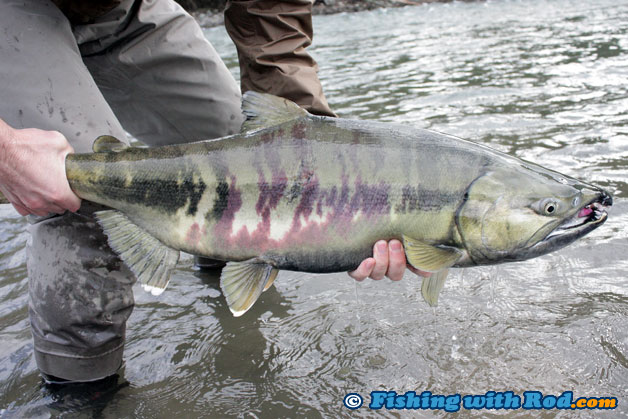
Darker salmon are poor table fare. Some may suggest that it would taste just fine if smoked. Perhaps so, but the meat quality is still no where near what a fresh silver salmon has. Darker colours on a salmon indicate that it has expended most of its energy on its migration. It uses up most of the fat content, resulting in degradation of its flesh. On the other hand, a silver salmon that recently arrives in a river is still energetic after feeding heavily in the ocean. These are the fish that you should be targeting.
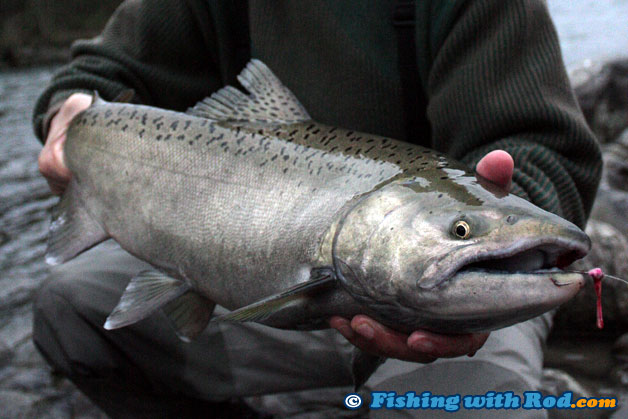
Beside being poor table fare, dark spawners are also recognized by anglers as fish that have made through all the obstacles to reach the spawning ground. For this reason, experienced anglers belive that they should be respected and left alone to carry out spawning in peace, so offsprings are produced to sustain the run's population.
Choosing what to harvest is of course rather subjective, which depends on an angler's experience and ethical views. An experienced angler may choose to only keep a salmon if it is completely silver, while others may also choose to keep fish that are slightly coloured. Quite often, inexperienced anglers would keep a dark salmon because they are happy just to catch one.
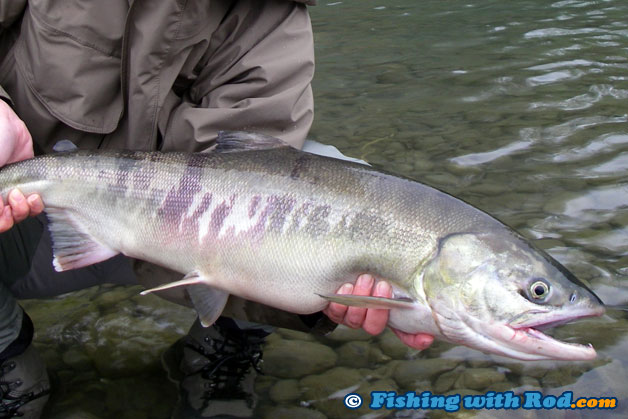
It is also species dependent. Chinook, chum and pink salmon have a tendency to darken much faster than coho and sockeye salmon once they are in a river. A slightly coloured chum salmon may in fact be just as fresh as a silver coho salmon.
There are ways to avoid encountering darker fish. You can do so by not targeting them on possible spawning grounds. Upper sections of a river and small side channels are typically where salmon stage and spawn. If you find yourself hooking dark salmon repeatedly, then it is a good idea to move to a different spot.
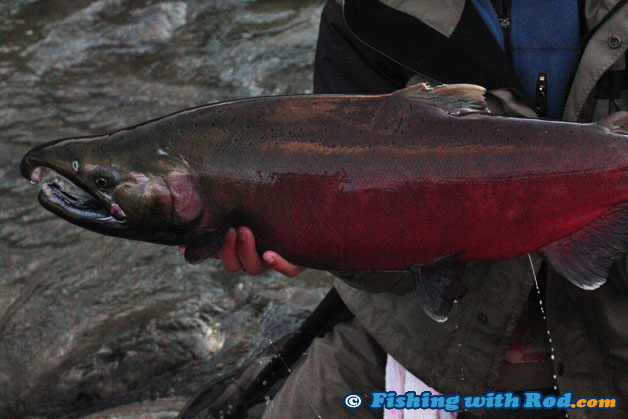
Finally, dark salmon that are close to spawning should always be kept in the water prior to being released. Too often, we see photographs of anglers holding up spawning male salmon spewing out milt or spawning female salmon dropping eggs. This is unfortunate because precious offsprings are lost due to careless actions.
By avoiding catching dark spawning salmon and releasing them with care when encountered, anglers can ensure enough returning salmon carry out spawning.

